
The Hollywood Revue of 1929, or simply The Hollywood Revue, is a 1929 American pre-Code musical comedy film released by Metro-Goldwyn-Mayer. It was the studio's second feature-length musical, and one of their earliest sound films. Produced by Harry Rapf and Irving Thalberg and directed by Charles Reisner, it features nearly all of MGM's stars in a two-hour revue that includes three segments in Technicolor. The masters of ceremonies are Conrad Nagel and Jack Benny.

Bobbie Gentry is an American retired singer-songwriter. She was one of the first female artists in America to compose and produce her own material.

That's Entertainment! is a 1974 American compilation film released by Metro-Goldwyn-Mayer to celebrate the studio's 50th anniversary. The success of the retrospective prompted a 1976 sequel, the related 1985 film That's Dancing!, and a third installment in 1994.

Hitler – Beast of Berlin (1939) was one of the most popular "hiss and boo" films of the World War II era, based on the novel Goose Step by Shepard Traube (1907–1983).
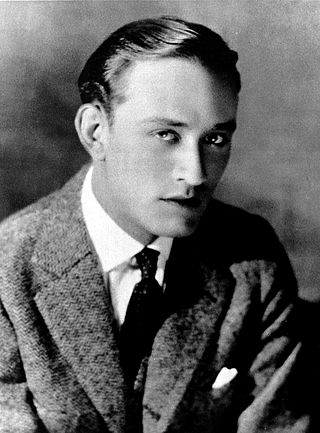
John Conrad Nagel was an American film, stage, television and radio actor. He was considered a famous matinée idol and leading man of the 1920s and 1930s. He was given an Honorary Academy Award in 1940, and three stars on the Hollywood Walk of Fame in 1960.

Snitz Edwards was a stage and character actor of the early years of the silent film era into the 1930s. He acted alongside popular screen actors including Rudolph Valentino, Clara Kimball Young, Douglas Fairbanks, and many others.

Crane Wilbur was an American writer, actor and director for stage, radio and screen. He was born in Athens, New York. Wilbur is best remembered for playing Harry Marvin in The Perils of Pauline. He died in Toluca Lake, California.

Jay Wilsey was an American film actor. He appeared in nearly 100 films between 1924 and 1944. He starred in a series of very low-budget westerns in the 1920s and 1930s, billed as Buffalo Bill Jr.
Grand National Films, Inc was an American independent motion picture production-distribution company in operation from 1936 to 1939. The company had no relation to the British Grand National Pictures.

The Perils of Pauline is a 1914 American melodrama film serial produced by William Randolph Hearst and released by the Eclectic film company, shown in bi-weekly installments, featuring Pearl White as the title character, an ambitious young heiress with an independent nature and a desire for adventure.
Roger E. Young is an American TV and film director.

So This Is Marriage is a lost 1924 American silent drama film directed by Hobart Henley. The film was originally released with sequences filmed in the Technicolor 2-color process that depicted the story of David and Bathsheba from the Book of Samuel.

Bank Alarm is a 1937 American crime film directed by Louis J. Gasnier and starring Conrad Nagel and Eleanor Hunt in the last of their four film G-Man film series.
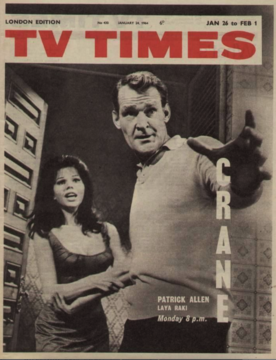
Crane is a British black and white adventure series that aired on ITV from 1963 to 1965. It was shown on Monday nights at 8 PM.

The 71st Golden Globe Awards, honoring the best in film and American television of 2013, was broadcast live from the Beverly Hilton Hotel in Beverly Hills, California, on January 12, 2014, by NBC, as part of the 2013-14 film awards season. The ceremony was produced by Dick Clark Productions in association with the Hollywood Foreign Press Association. Woody Allen was announced as the Cecil B. DeMille Award honoree for his lifetime achievements on September 13, 2013, and Diane Keaton accepted the award for him. On October 15, Tina Fey and Amy Poehler were announced as the co-hosts for the second time in a row and as the co-hosts for the 72nd Golden Globe Awards. The nominations were announced on December 12, 2013, by Aziz Ansari, Zoe Saldana and Olivia Wilde. American Hustle, Behind the Candelabra, Breaking Bad, Brooklyn Nine-Nine, and Dallas Buyers Club were among the films and television shows that received multiple awards.
Sisse Graum Jørgensen is a Danish film producer and sits on the board of the film company Zentropa. Films she has produced include Hævnen, Jagten, and Dear Wendy. She also sits on the advisory board for TrustNordisk, a Scandinavian international film distributor.
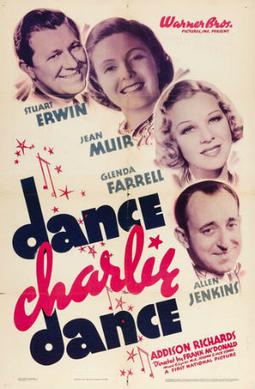
Dance Charlie Dance is a 1937 American comedy film directed by Frank McDonald and written by Crane Wilbur and William Jacobs, based on the play The Butter and Egg Man by George S. Kaufman, which opened on Broadway on September 23, 1925 and ran for 243 performances. The film stars Stuart Erwin, Jean Muir, Glenda Farrell and Allen Jenkins and features Addison Richards. It was released by Warner Bros. on August 14, 1937.
George Hirliman (1901–1952) was a film producer.
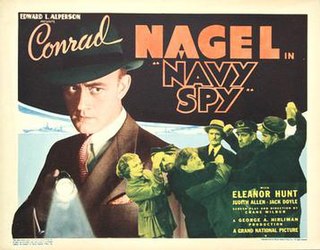
Navy Spy is a 1937 American thriller film directed by Joseph H. Lewis and Crane Wilbur and starring Conrad Nagel, Eleanor Hunt and Judith Allen. It was one of a series of four films featuring Nagel as a federal agent released by Grand National Pictures.
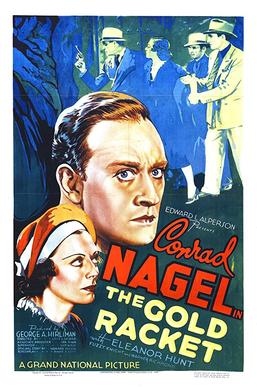
The Gold Racket is a 1937 American crime film directed by Louis J. Gasnier and written by David S. Levy. The film stars Conrad Nagel, Eleanor Hunt, in the third of their "G-Man" film series as well as Fuzzy Knight, Frank Milan, Jack Duffy and Albert J. Smith. The film was released on April 10, 1937, by Grand National Films Inc.
















